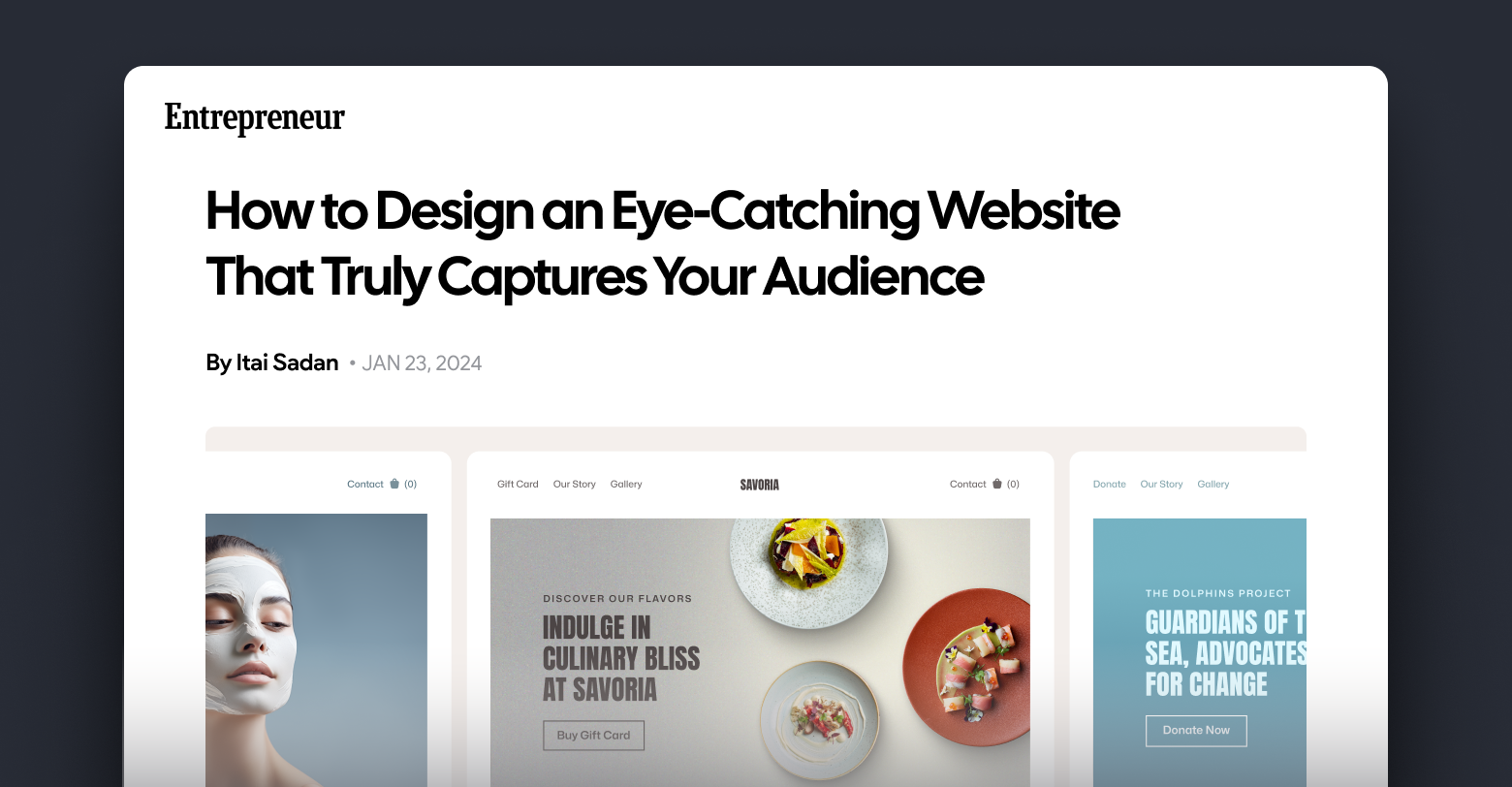This article originally appeared at
Entrepreneur.com.
Modern-day websites represent the culmination of years of technological advancement and scientific research, forming incredible symphonies of code and servers that define the internet. However, these digital platforms are also highly expressive art forms. Similar to music or theater, the rules governing a "well-designed website" are in constant flux.
Consider Spotify Wrapped, for instance. If everyone's most-streamed songs were consistently the same year-over-year, it wouldn't be very exciting, would it? Instead, interests evolve and websites are no exception.
Users now anticipate different things from modern websites compared to 10 or even five years ago. They prioritize accessibility more than ever and are moving away from the thin fonts and minimalistic designs of the 2010s.
If you aim to design websites that captivate your visitors and engage your audience, staying ahead of these trends is essential. Your website is your storefront on the internet — an indispensable extension of your brand. You wouldn't want it to appear dated, would you?
Animated hover effects
Motion has long been a crucial element of high-quality UI design, and that trend isn't fading away anytime soon. Users increasingly expect high levels of interactivity from the sites they visit. They desire fluid animations and clear signals when elements like buttons and menus are interactive. Enter "hover effects."
Graza, a trendy olive oil brand, incorporates hover animations throughout its website. Buttons exhibit interesting depth and images seamlessly transform into videos with a simple wave of your mouse pointer. Other websites may take hover animations to the next level with effects that follow your mouse, revealing additional information or changing the design as your pointer navigates the landing page.
Implementing this trend is easier said than done. Poorly-executed complex animations can be distracting. On a technical level, slow animations can make your website appear dated and may even harm your SEO performance. Instead, aim to use animations thoughtfully and judiciously. Create interactions that excite and delight, but don't add these effects just for the sake of having them.
Dark, futuristic websites
In recent years, Apple has been showcasing its "Pro" series of products with dark, futuristic landing pages. Check out the iPhone 15 Pro's product page and you'll notice vibrant colors set against a dark background. This has been a growing trend for years, one that continues to gain momentum.
This website design leverages the highlighting effect of black and black-adjacent backgrounds to emphasize vibrant, almost "neon" colors. Figma and Github also embrace this style for various landing pages and features. Others commonly use it to promote conferences and events, as well. This isn't a trend exclusive to tech companies, either. Fashion brands, often on the cutting edge of design, are adopting it too. Nike created a vibrant community website using their "volt yellow" color against a futuristic dark design.
Remember, this trend is all about dark backgrounds, bright colors and sharp angles. When designing a website this way, aim to create something that feels like it's from 3023, not 2023.
Typography-first design
Arguably, the most crucial part of a website has always been its content — that's why people visit a website, after all. Modern design acknowledges this with large, beautiful fonts that capture visitors' attention and quickly convey the necessary information.
Gumroad, for example, utilizes typography in an almost magazine-like way, creating a website that feels exceptionally fresh and modern. In fact, magazines are an excellent example of this trend. Websites that utilize a typography-first design approach use large, creative and attention-grabbing fonts in a thoughtful way, much like a high-end magazine, to create a unique experience centered around information.
The key takeaway here is that these websites feel "modern" in a way that minimalism no longer does. Audiences, especially Gen Z members, have developed an appetite for maximalist designs. This trend is a trend you'll quickly notice when walking up and down the aisles of Whole Foods.
Gradients
Sticking with the "maximalist" theme is the unsurprising revival of gradients. Modern audiences love bright, interesting colors and gradients are the ideal vehicle to deliver those colors.
Stripe has long used gradients in its branding, featuring a lava lamp-esque animated gradient on its homepage for quite some time now. Spotify, too, has always embraced striking gradients as part of its well-regarded design language.
The common thread among these websites is the liberal use of exciting, brand-oriented colors. These gradients accentuate other design elements and can help present a brand's website as friendlier and more inviting.
Putting it all together
A perceptive observer may notice that many of the example websites listed above incorporate a mix of these upcoming design trends. That's the real secret to website design — knowing which trends to use and, more importantly, when. While it's crucial to create designs that feel fresh and modern, you also want to ensure that your decisions respect and empower your brand.
Luckily, once you figure out where the pieces fit, implementing these design trends becomes a breeze. A drag-and-drop website, offering flexibility and access to front-end code, can empower your team to craft cutting-edge designs that keep you ahead of the curve.
Take some time to consider your next steps, experiment a bit and start building. You wouldn't want these trends to go stale.






